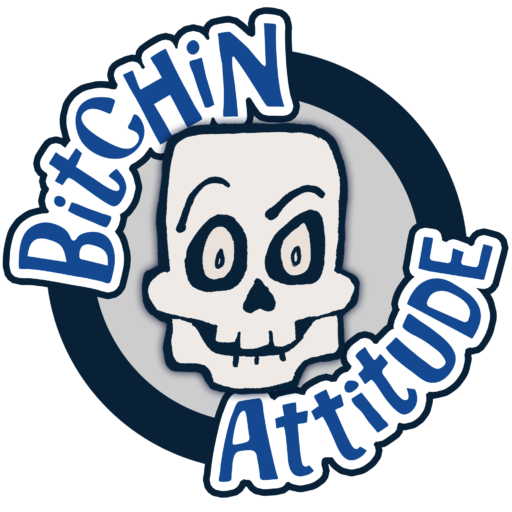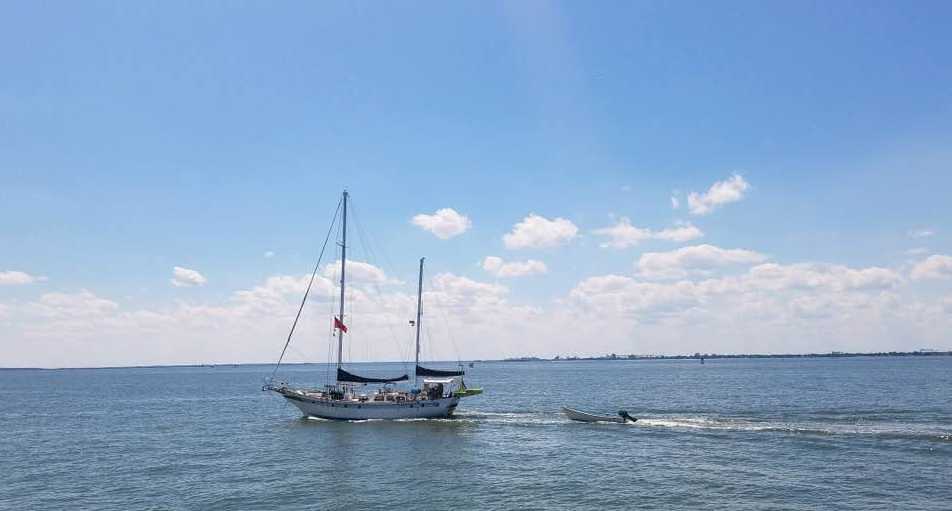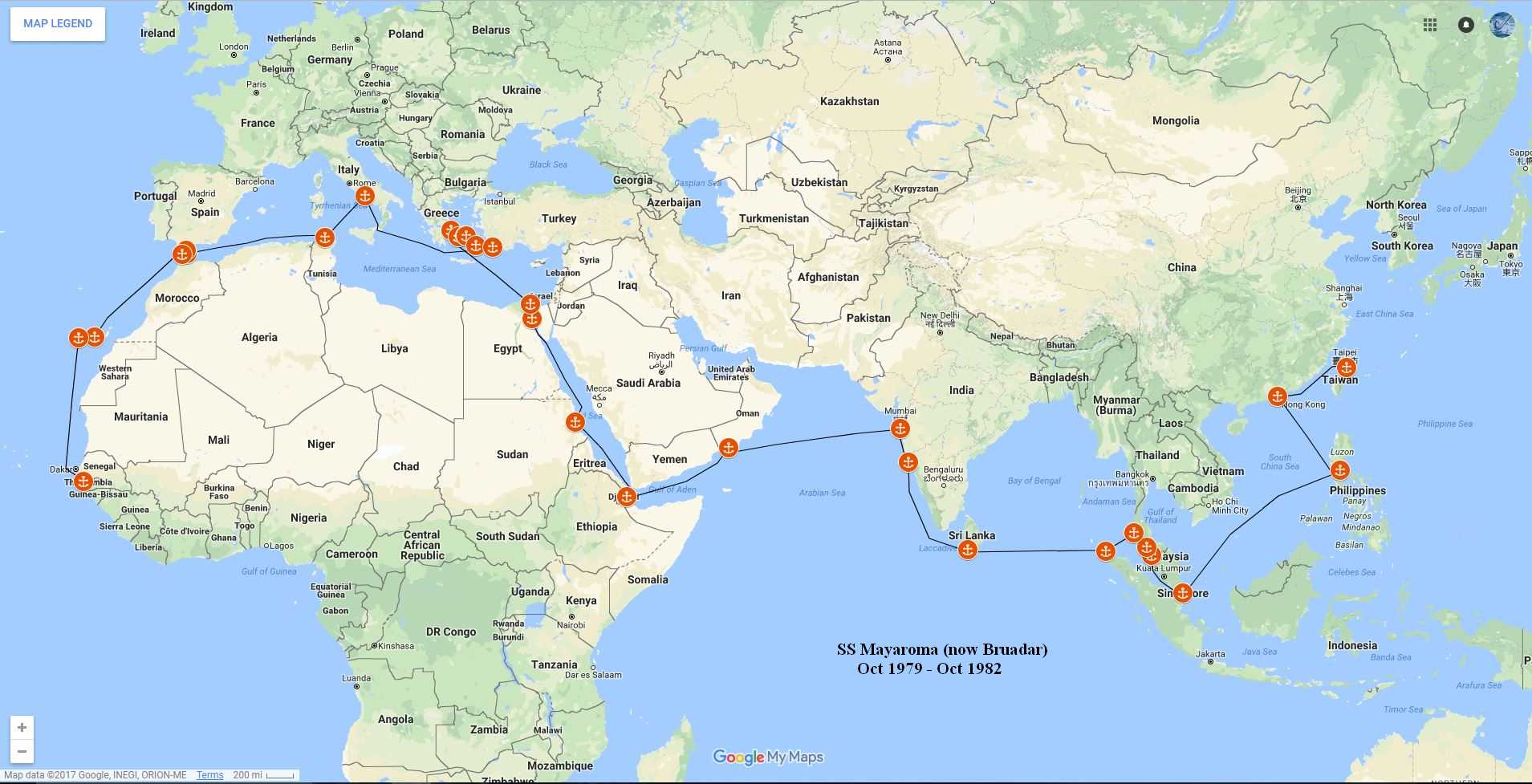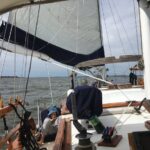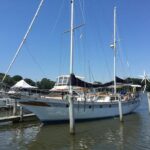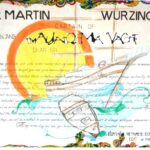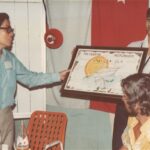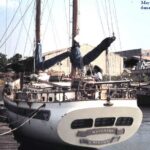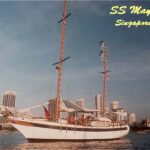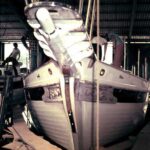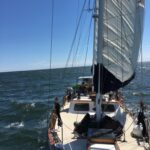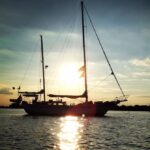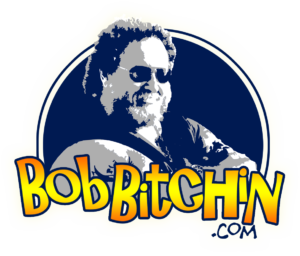It’s the sort of question that almost always comes up when cruising and you meet new friends. “So where have you guys been on your boat?” After a few drinks the stories begin to flow like rum. It’s not about one-upmanship, but more about having fun talking about the memories you’ve made while cruising. Now just stop and think for a minute, wouldn’t it be really cool if you could ask your boat where she’s been? This is something we have always thought about and until recently we had more questions than answers.
Our boat is named Bruadar; it’s Scottish Gaelic and means Our Dream. She is a shoal draft cutter rigged ketch based on an original design by William Garden from 1954. We are not her original owners so her past was always a bit of a mystery. We know she was built in Taiwan back in 1979. Her length on deck (LOD) is fifty one feet so she is called a Formosa 51. These boats are tanks, by that I mean heavy full keel cruisers. They have earned many nicknames over the years, things like Leaky Teaky and Taiwan Turkey to name a few. Have you seen the movie Captain Ron or 50 First Dates? In both movies, yup you guessed it, the boat is a Formosa 51. But what happened to our boat after it was built? How did it make it to the United States?
We bought Bruadar in Fort Lauderdale about ten years ago. Her previous owner purchased her from a gentleman that chartered her around the Caribbean. We always believed that she was sailed across the Pacific Ocean to California, then through the Panama Canal to the Caribbean. Her Coast Guard Documentation shows three names, first Mayaroma, then Island Girl and now Bruadar. We named her Bruadar after purchasing her in Florida, the name Island Girl just seemed to generic. Island Girl’s previous name, Mayaroma, had no meaning to us but we always wondered about it? I tried to find out more information online but searches only confirmed the ‘Mayaroma’ was not a word. Other searches never brought me to a boat named Mayaroma. The question remained unanswered for many years. Then, just recently I decided to do another search. I could not believe it, right there on the first page of search results was a fifty foot ketch named SS Mayaroma. Was this really our boat? It was time to do some research and verify this new information.
Our internet search told us that SS Mayaroma (now Bruadar) was owned and captained by Martin Wurzinger, an Australian. On her maiden voyage SS Mayaroma left Taiwan in October of 1979. Her destination was Hong Kong and during this passage she was caught in a class five storm, named Typhoon Tip. Talk about a shake down cruise! After leaving Hong Kong she headed for Manila in February of 1980. It was on this trip that she came across a boat of refugees fleeing South Vietnam. The refugees were aboard a boat owned and operated by a refugee family trying to flee Vietnam as well. Martin and his crew rendered aid to the refugees and helped them get back underway. Two hours after Mayaroma had departed to continue on her voyage the refugees realized their boat was taking on water and sent out an SOS. Captain Wurzinger came back and rescued them, taking everyone onboard Mayaroma. He did not realize it at the time but the sinking boat had eighty nine refugees. For six days Mayaroma had ninety three souls onboard. Mayaroma headed south to Singapore. In order to make the trip Captain Wurzinger had to ration food and water. Everyone arrived alive with sunstroke being the only medical concern onboard. I can only imagine our sailboat with ninety three people onboard, just amazing!
After some digging around we were able to request transcripts of the interviews from Captain Wurzinger and a member of the crew named Ann Nguyen. It turns out that Ann was a teacher and the only refugee who could speak English. The story of the rescue is preserved at the Australian National Maritime Museum and in the University of Minnesota Digital Conservancy as part of a project called -Voice to Vision XI: 89 Rescued by the Mayaroma. During this research we found an email address for Martin Wurzinger. He is alive and well in Australia. We reached out to him and he was pleasantly surprised to hear that his boat is still sailing. We also heard from a survivor, Patrick Vu, who was only eighteen at the time of the rescue. Martin was kind enough to share his journeys with us and even a few photos. We sent Martin copies of our boat’s documentation and he shared with us his bill of sale. Through these documents we were able to verify that Bruadar is the boat that Martin bought brand new back in 1979.
Finding Bruadar’s original owner and learning about the first voyage has been an amazing journey back in time. We now know that she has survived a Class V Typhoon named Tip. While in the South China Sea she was part of a rescue that saved the lives of eighty nine refugees. She has sailed west from Taiwan to the Canary Islands via the Suez Canal. What an amazing journey, my hat is off to Martin Wurzinger. I try to imagine what this must have been like in a time before GPS. Mayaroma left the Cape Verde Islands and sailed to the city of Banjul in Gambia, Africa. While docked in Banjul a tornado hit the harbor and Mayaroma suffered some serious damage. Her bowsprit and rudder both hit a pier needed to be replaced. This was the end of the journey for Martin Wurzinger but not for Mayaroma. Martin sold Mayaroma to a British gentleman that was working in Africa as an Architect. How do we know? Martin was able to provide us with a Bill of Sale and a name. Now it is time to track down the second owner and learn how Mayaroma made it from Africa to the Caribbean.
What other stories is Bruadar waiting to tell us? All of these questions and answers lead me to another question? Do you really own your boat or does she own you for a time? Bruadar is ‘Our Dream’ and we will sail her, document our voyages and as stewards we will continue to research and document her past until it is time for her next owners. When people ask me, “where have you been on your boat?” I can answer them with our stories but also tell them about our boat’s past and the many miles that have passed under her keel – how Kewl!
